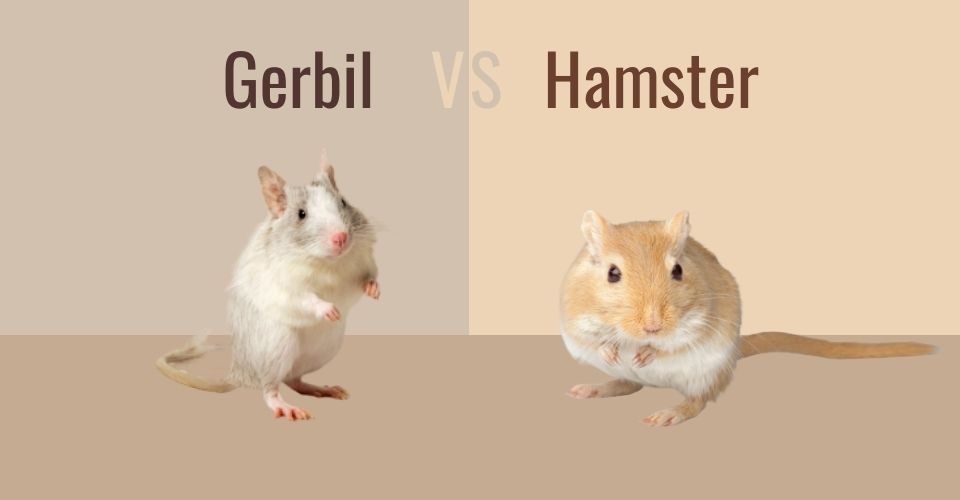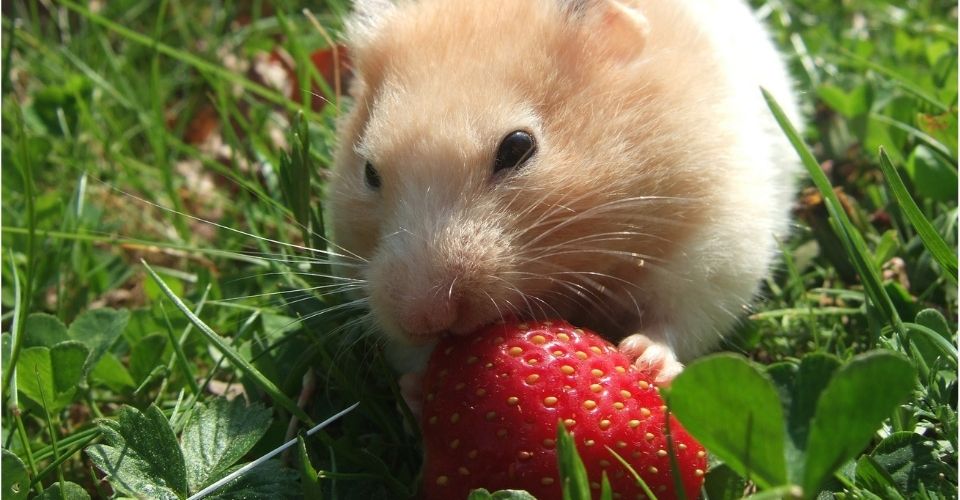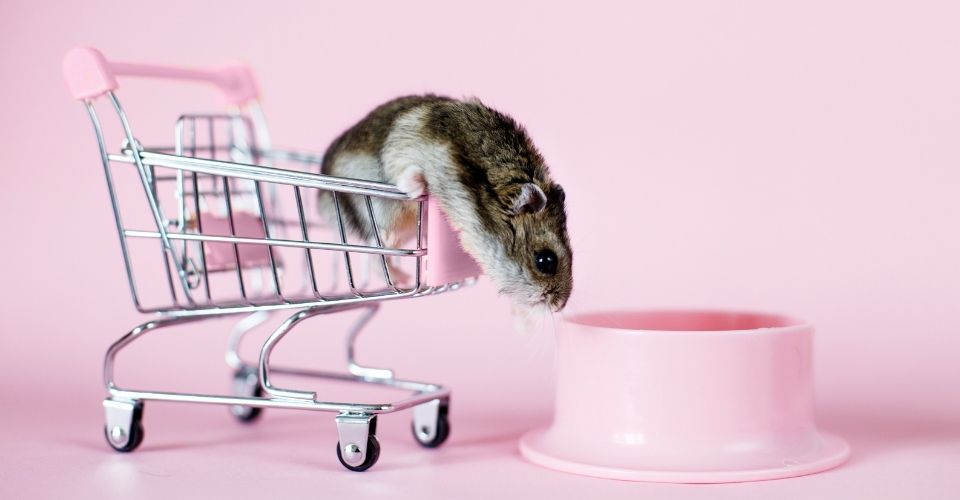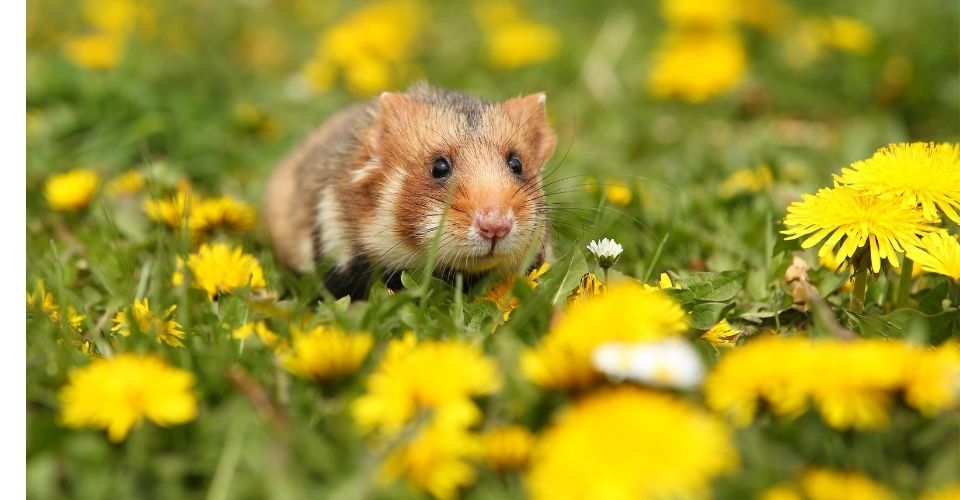Gerbils and hamsters are popular as pocket pets because of their petite features and an overload of cuteness. They have a reputation for being great pets for kids. Many people choose either one of these as a first pet for their kids. This is because these rodents are easy to care for, are small, and don’t require daily physical activities. But many people find it hard to differentiate between the two rodents and often confuse them to be the same. This, however, is not true. So, before we start our gerbil vs. hamster debate, let’s first understand the differences between the two and which one makes a great house pet are?
Gerbil vs. Hamster at a Glance
| Characteristics | Gerbils | Hamsters |
|---|---|---|
| Appearance | Wide and hairless tailsLong feetThey have a two-toned coat | They just have a tail nubThey have short and stocky legsThey may have a solid-colored or a two-toned coat |
| Temperament | Friendly, inquisitive, and curious | Moderately social, docile, and sweet-natured |
| Training Needs | Very active | Moderately active |
| Care and Handling | Easy | Easy |
| Health-Related Issues | Dental problems, skin issues, ear mass growth, and epilepsy | Dental problems, diarrhea, and cancer |
| Life Span | 3 – 4 years | 2 – 3 years |
Gerbil vs. Hamster: What Are the Differences?
As mentioned earlier, there are numerous differences between gerbils and hamsters. Because of their small size and their tiny claws, people often confuse the two to be similar. If you look deeper into the characteristics of each, you will find out how different they are. To make things more simple for you, we have divided their features. So let’s take a closer look to find out more about these rodents.
Gerbil vs. Hamster: Appearance
Regarding their appearance, they have quite a few differences in their back legs’ color, tails, and size.
Tails
A gerbil’s tail is wide and hairless. When out in the wild, they use their tails to store extra fat. On the other hand, a hamster doesn’t have a tail—it has only a small tail nub.
Feet
The gerbils have long feet. They use their back legs to stand up and look around, so they can keep an eye on their surroundings or a predator who might be creeping upon them. The hamsters, however, have small and stockier feet. They don’t use their legs to stand up; instead, they use them more to run around.
Coat and Eyes Color
Both these rodents have a lot of color variations in their coat. Gerbils have a two-toned coat— one color on the top and another color on their bellies. A gerbil’s most common coat colors include grey, brown, white, orange, yellow, cream, silver, slate, or even red. Their eye color can be dark brown, black, pink, or deep red.
A hamster’s coat may be solid-colored or two-toned. A hamster’s most common coat color includes grey, orange, champagne, sable, rust, gold, cinnamon, and cream. Their coat can be short and silky or long and smooth, or curly.
Gerbil vs Hamster—Temperament
You need to know a great deal about the personalities of these rodents before you decide to bring them home. The gerbils are known to be shy, but they are very affectionate towards their owners once they settle in a house. They bond quickly and make friends easily. Additionally, they are very intelligent and active.
A hamster’s temperament—in contrast—depends on the type of hamster you bring home. Syrian hamsters are very friendly and have sweet personalities. Dwarf hamsters are a little temperamental and can be easily upset. They also bite, especially when scared or provoked.
Training Needs
The most important thing to keep in mind while training any of these two rodents is to hand-tame them. They need to feel relaxed around you before you start training them.
For a gerbil, it is easy to hand-tame it once it is relaxed around you and doesn’t get scared when you touch it or reach out to hold it. They are so smart that you can train them to use a litter box, teach them to respond to their name being called, and come running to you when you call them to jump on our hand.
Hamsters cannot be trained for much other than to be held. For training to hand-tame them, you will have to be patient and persistent. If you have just brought a hamster, you need to give it time to relax and adjust before you train them. Once they start to eat and drink in their cage, you can begin the training sessions. Generally, young hamsters are known to be trained and tamed easily, as compared to older hamsters.
Care Needs of Your Pocket Pets: Gerbil vs. Hamster
Caring for your pocket pets can be easy in some ways, but you need to be very gentle and cautious while doing so.
To keep your gerbil happy and thriving, you need to indulge it in plenty of exercises. They are very intelligent and active rodents, so you should keep them busy with physical exercises as well as some tricks and games to keep their brains stimulated. Feeding them is easy—you just need to buy them some gerbil food from a pet store.
Caring for a hamster is also easy. They need to be cleaned and hand-held daily so they can bond with you. Be gentle when handling them. Additionally, don’t bring them out of their cages without supervision, especially if you have other pets, such as dogs or cats. They might hurt them or see them as a snack to devour.
Health and Life Span of Gerbil vs. Hamster
A gerbil is generally considered a hardy and healthy pet, but they may go through some health issues from time to time. These health issues may include dental problems, skin diseases, growth of an ear mass, and epilepsy.
On the other hand, Hamsters are more prone to diarrhea, cancer, tumors, and dental issues.
Unfortunately, both of these rodent pets don’t live for long. A gerbil’s average life span is three years, while a hamster can live for two years on average. However, there are some cases where these pets have exceeded the average lifespans.
Conclusion
So to sum the gerbil vs. hamster debate up, it is safe to conclude that both these rodents make great pets. If you plan to get your kids their first pets, opt for one of these two as they are easy to look after, don’t require frequent physical activities, and adjust quickly to a new environment. Their social and friendly nature makes people instantly fall in love with them. They may only live for 2-4 years on average, but the time spent with them is very rewarding and gratifying.





